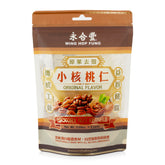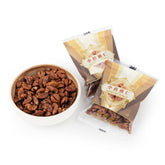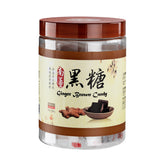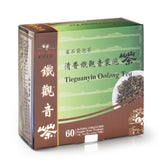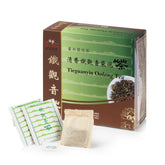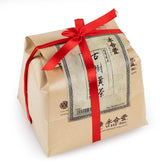The Story of Matcha

The Story of Matcha
We all know that drinking tea benefits body, mind and spirit. A soothing tea with fragrant steam rising from the cup enlivens our senses and offers a prayer for the health and wellness of ourselves and others. Did you know that teas reduce stress while they increase energy and immunity?
Matcha powder
Matcha, the vibrant, bright green-colored tea powder, is used in the famous traditional Japanese tea ceremony, but you can also use it in recipes or add milk and sugar for a refreshing latte. Matcha originated in the Sui Dynasty in China. At the end of the ninth century (the mid-Heian period of Japan), matcha entered Japan with the Japanese envoys sent to the Tang Dynasty. It was respected by the Japanese people and developed into today's Japanese tea ceremony.
Matcha Tea Chemicals
Lately matcha tea has become popular among health enthusiasts because of its rich L-theanine content, a non-protein amino acid with powerful stress-relieving properties. Matcha is a better source of this amino acid than other types of green tea because it is made from green tea leaves grown in shade. This process increases its content of certain compounds, including L-theanine and chlorophyll. Farmers grow matcha by covering their tea plants 20–30 days before harvest to avoid direct sunlight which increases chlorophyll production, boosts the amino acid content, and gives the plant a darker green hue. Once the tea leaves are harvested, the stems and veins are removed and the leaves are ground up into a fine powder known as matcha.
Matcha Science
Both human and animal studies show that matcha may reduce stress if its L-theanine content is high enough and its caffeine is low. For example, in a 15-day study, 36 people ate cookies containing 4.5 grams of matcha powder each day. They experienced significantly reduced activity of the stress marker salivary alpha-amylase, compared with a placebo group. https://www.ncbi.nlm.nih.gov/pmc/articles/PMC6512570/
Growing/Processing Effects of Matcha
Since the leaves are ground into powder, you end up consuming the whole leaf. For this reason, matcha may have even more benefits than regular tea. The raw material of matcha is the tea leaves that are steamed and dried without kneading. The raw materials used in the high-quality matcha tea used in tea ceremony are traditional materials such as reed curtains and straws, or materials such as zhuluo yarn to cover the tea garden and block the sunlight. The characteristic result is that the tea has less astringency. The taste is rich in layers, with a unique scent similar to green seaweed.
Caffeine in Matcha
If you are sensitive to caffeine, make sure not to consume more than 2 cups (474 ml) per day.
Long-Term Benefits
Studies of matcha and its components have unearthed a variety of benefits. It is high in antioxidant and can help protect the liver, promote heart health and brain function and even aid in weight loss. (healthline.com)
How to Brew Matcha
For this unique powdered tea you need special equipment and method of brewing.
- Start with filtered water for the best brew.
- You will need: a matcha whisk, a tea bowl, a matcha spoon or teaspoon, and a matcha strainer (optional)
- Add 2 scoops or 1 teaspoon of matcha to the bowl. A strainer may be used to sift the matcha free of clumps. Adjust the amount of matcha to your preferences.
- Slowly add 1/3 cup of hot water (~175°F).
- Lightly press the matcha whisk into the bowl and whisk in a quick back and forth motion until a smooth layer of foam is created.
- Enjoy immediately!
Note: The method above is to make usucha, or thin tea. The way to prepare matcha for the tea ceremony is known as koicha, or thick tea.
Matcha in soups, cookies, cakes and pancakes
Fortify your recipes with the benefits of matcha. The powder is easy to add to recipes. Here are a few quick recipes:
Matcha Vegetable Soup
Warming, soothing and energizing a healthy green soup.
Ingredients:
- 2 cups of chopped vegetables
- 2 cups of water of more
- 2 tablespoons of matcha powder
- Olive oil to taste
- 2 cloves garlic
- Dried herbs such as oregano, thyme, caraway, cumin or rosemary
Do not overcook the vegetables. Roughly chop carrots, squash, celery, yam, onion, spinach, the herbs and oil with your favorite vegetables. Add the water and bring the soup to a boil then quickly remove the pot, add the lid and allow the soup to steam for 5-10 minutes. Whip the matcha powder with water to make a foam and add it to the warm soup.
Or for a cooling, refreshing summer soup, use chopped raw vegetables and add cold matcha!
Green Pancakes
Who ever heard of green pancakes? It’s fun for St. Patrick’s Day or a recipe to make with the kids.
Ingredients:
For convenience, use a ready made pancake mix such as Bob’s buttermilk pancakes or a Korean pancake mix. Just add matcha as a dry ingredient. Use an amount that suits your color and taste palate. You may have to sweeten the mix if the matcha makes the mix bitter. To protect blood sugar balance for diabetes, use powdered monk fruit or stevia.
Matcha Breakfast Cookies
They are vegan, gluten-free, and made with nutritious ingredients and matcha for an extra hit of caffeine.
Ingredients
- 1 tablespoon flaxseed meal
- 1 3/4 cups rolled oats, divided (OR 1 cup oat flour plus 3/4 cup rolled oats)
- 1/2 cup shelled nuts
- 1 teaspoon baking powder
- 1/4 teaspoon sea salt
- 1 really ripe banana, mashed
- 1/4 cup melted coconut oil
- 1/4 cup coconut sugar
- 2 teaspoons matcha powder
Preheat the oven to 375F. Line a baking sheet with parchment paper; set aside. In a small bowl, stir the flax meal with 2 tablespoons of filtered water (this is sometimes called a “flax egg”). Refrigerate it for 5-10 minutes while you prepare the rest of the ingredients – the resulting “egg” should be thick and slightly gelatinous.
If using rolled oats, pour 1 cup of the oats into a food processor or high-speed blender and grind them to a fine meal, 1-2 minutes. Transfer the ground oats (or oat flour) to a medium bowl, along with the remaining 3/4 cup oats, nuts, baking powder and salt. Stir to combine.
In a separate bowl, stir together the banana, coconut oil, sugar, matcha and the flax egg. Fold the oat mixture into the banana mixture, stirring just until combined.
Spoon the mixture onto the prepared baking sheet spacing the cookies 1-2 inches apart.
Bake until lightly golden, 12-14 minutes. Transfer the cookies to a cooling rack and let sit for 10 minutes before eating. You can also place cooled cookies in an airtight container and store in a cool dry place for up to 5 days.
Matcha is only one of many exciting teas that Wing Hop Fung sells. We source from our pristine tea plantations and from the highest quality producers with terrains around the world.

